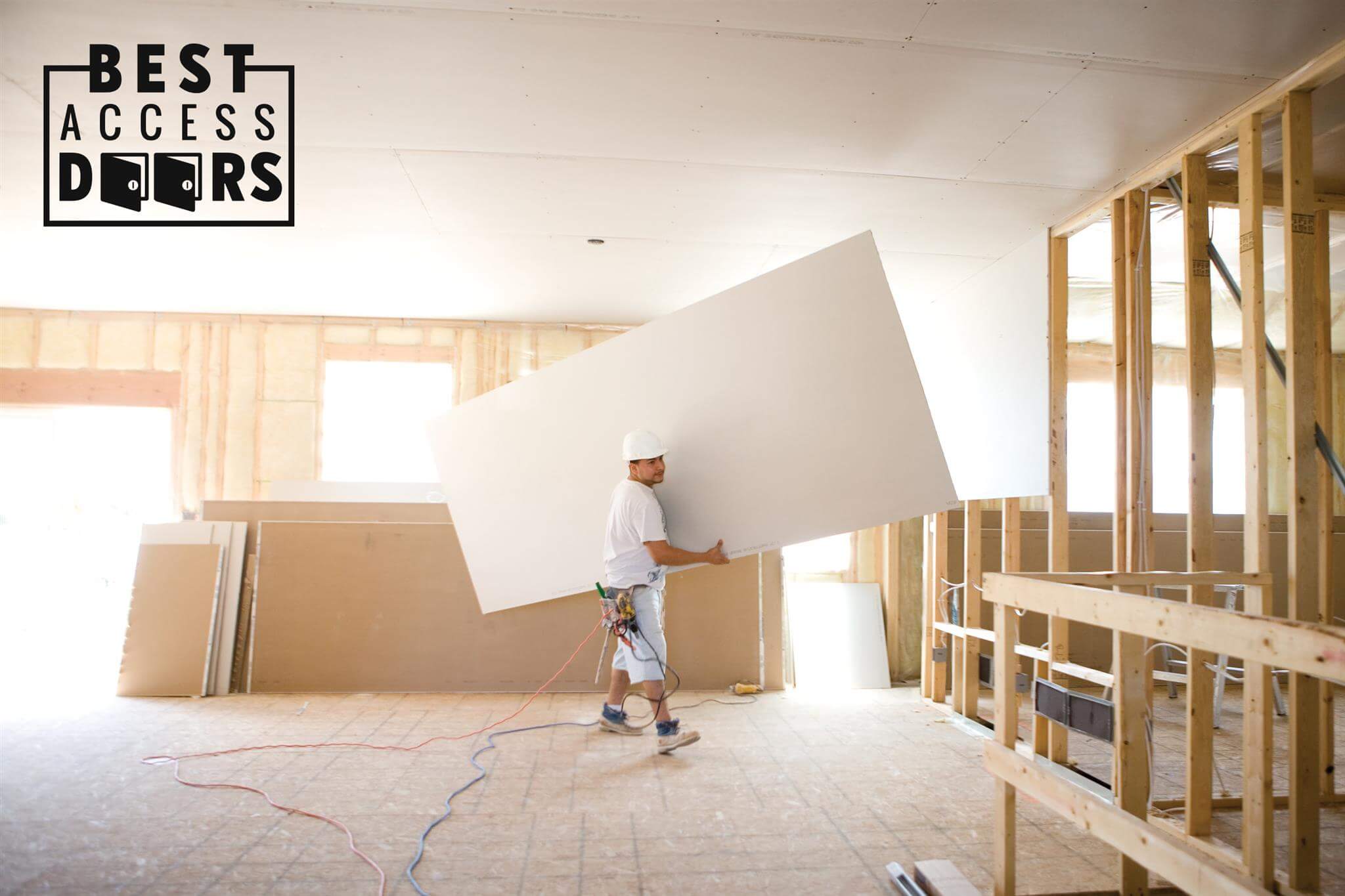Industry Basics
Posted by Best Access Doors on 4th Oct 2018
Did you know the when it comes to the basics of construction it can be summed up into four categories: initiation, planning, building and post inspection. Together, these four make up the basic understanding of what is part of the most hands-on industries anyone could enter. Whether one is starting off in the industry or they are seasoned laborer's, the idea of construction is not just about pouring concrete foundations, supporting beams and installation – it is so much more than what meets the eye. Though there are many minor and somewhat essential steps in-between, there four categories best describe the must-dos of any construction project, whether it be commercial or residential.
Initiation
This is the phase of development where plans are still behind reviewed. At this phase, a contractor and his company may be eyeing a bid for a project. The initiation phase is an important one in that the contractor can determine if they have the resources, the staff and the ability to complete the task before them – maybe they need to hire more people or perhaps they need more resources, at this stage nothing is set in stone yet. Things are still being discussed and negotiated.
The initiation phase from a client perspective is just as important for the contractor because they may not have the information or understanding when it comes to getting their vision or idea off the ground. As a contractor, designer or engineer, their knowledge allows them to set the guidelines for the project and provide a realness to the vision of a client.
Planning
Once the logistics have been discussed, and an agreement has been drafted now comes the planning. There are many components to this stage that are essential to having a smooth project outcome, or rather as smooth as a project can be once executed.
In the planning stage, there are discussions of the budget, timeline expectations, and material designs. When it comes to planning and budgeting a contractor understands that there has to be a buffer should there be unexpected expenses – and while clients may not always agree, they’ll be thankful they set aside some extra funds. Sometimes you need more material; you work longer and sometimes, costs rise and rise, and it isn’t until you are in the situation that you realize the costs of a project. Similar to a budget, timelines must be seen in the same light as while a client may think it takes x-amount of days to finish there is so much more to consider. From weather to injury to delay in materials, the planning stage is the best way to take the initiation and create a realistic and solid foundation.
Building
Here is where the fun stuff begins, this is where the drawings, all those countless hours planning and prepping become reality – the building phase. Here, the contractor assigned to the project will have designated her necessary men to assist with the project build. While one may think that with all the planning and prepping this stage would be a walk in the park – it is far from that. Sometimes a contractor can encounter issues or project delays that can make the project last longer than it should. In some cases, if materials cost more than intended or more man hours are needed, these variables can impact the budget and if the money runs out – the job stops. In a way, if a contractor has planned accordingly and they have allowed for a buffer both on the positive and negative – such issues have become mitigated and if they arise, the contractor and his team know how to handle it.
From ensuring they stick to budget restraints but also timelines, the building phase will genuinely test out how well the planning stage went. During the planning phase, was enough funds allotted, staff and did everything planned to go as planned.
Post Inspection
Once the building, the organizing and everything in between is done, now come to a step that sometimes is overlooked if not ignored. The walk-through or rather the post-inspection. This phase is important for both the client and the contractors. For clients, having a contractor inspect and go through their project and job-site provides the assurance of quality and reliable work. Sometimes the state of a job or the quality and craftsmanship of a job isn’t realized till after the fact which is why a thorough walkthrough once all the nails and hammers have been used can allow one to see if there are imperfections.
Contractors often don’t realize their work till the end of a job and with a post inspection, they can ensure that the quality of work they did is the type of work and reputation they stand for. Quality is better than quantity and with construction and repairs, quality and detailed work is important for thriving.
Basic Buildings
Whether you are in the commercial, industrial or residential sector of construction, these four basic principles are applicable throughout, because no matter how big or small, complicated or not there still has to be the planning, the building and of course the inspection. Without these no project would ever be done – or rather, no project would be done correctly and efficiently. Building basics, its more than just metals, woods and tools – it is the planning, prepping and execution.
For more helpful tips, visit our blog or to view our inventory of panels for any building project, visit our product page.
Share our story - the 2025 version is available

